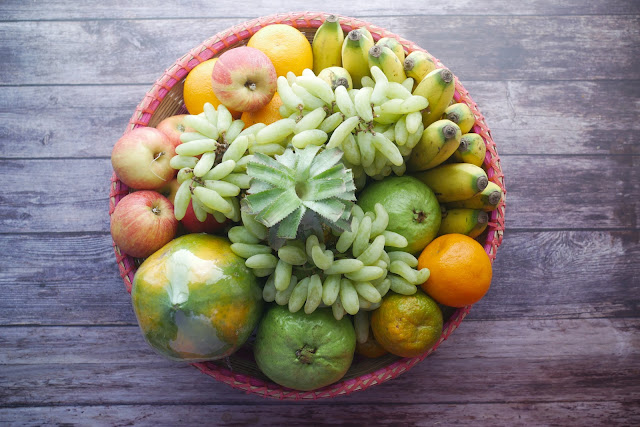Benefits of Nutrient - riched fiber foods
Have you
seen what fiber is, to begin with? We refer to fiber as a form of carbohydrate
that the body is unable to digest. Water-soluble fiber and water-insoluble
fiber are the two different forms of fiber available. A surplus of water-soluble fiber in the blood aids in lowering and stabilizing blood sugar and
cholesterol levels. Water-insoluble fiber regulates the digestive system,
maintains a steady flow of food through the body, and prevents from problems
like constipation. Because of this, medical professionals advise eating more
fiber-rich foods when digestive problems occur.
We'll see the top ten fiber-rich foods in this post, which can provide a number of advantages.
Apple
Apples are the best fruit that people of all ages can eat. 2.5 grams of fiber are present in 100 grams of apples. There is a lot of fiber in its skin. So always eat an apple with the peel on
Guava
fruit
Guava is one of the fruits high in fiber. 5 grams of fiber are present per 100 grams of ripe guava. When one guava fruit is consumed daily, 25% of the daily fiber requirement is met. Guava fruit has a lot of mineral salts, including vitamins C and A, which are essential for body growth.
Bananas
They were
originally from Southeast Asia, but are now grown all over the world in warm
climates.
Bananas come
in a variety of hues and shapes.
Pectin, a type of fiber that gives banana flesh its spongy structural structure, is abundant in bananas.
Resistant
starch, which functions like soluble fiber and avoids digestion, is present in
unripe bananas.
Pectin and
resistant starch both have the ability to control blood sugar levels after
meals and decrease hunger by delaying stomach emptying.
The
Cavendish variety of dessert banana is the most popular. When unripe, it is
green; as it matures, it turns yellow.
In addition
to many antioxidants, bananas also provide a considerable amount of fiber.
Bananas also contain a significant amount of potassium. It supports blood pressure maintenance.
Chickpeas and green peas
Green peas contain 17 grams of fiber per 100 grams, making them high in fiber. It provides 68% of the daily recommended amount fiber intake. You can consume it by mixing it into cooked food.
Black gram, unpeeled green lentils
Lentils provide 16 grams of fiber per 100 grams. In addition, it contains a lot of protein and iron. Both of these can be included in your everyday diet. If you notice green or black gram, you should use both of these crops without removing the upper skin.
Beets
Beets have a lot of fiber. Fiber not only keeps your digestive system regular, but it also lowers cholesterol and helps control blood sugar. 3.4 grams of fiber are present in one cup of beets. (The American Heart Association advises consuming 25 grams of fiber each day.)
Almonds
100 grams of almond paste contains 13.3 grams of fiber. It is very good to soak a handful of almonds in water on the first day and eat them the next morning.
Basil seeds
100 grams of
basil seeds contain a very high amount of 34.4 grams of fiber. A spoonful of
basil seeds soaked in water and eaten daily is sufficient. Basil seeds can be taken in water or fruit juice.
It not only prevents constipation but also reduces body heat.*





.png)


0 Comments